new posts in all blogs
Viewing: Blog Posts Tagged with: john, Most Recent at Top [Help]
Results 1 - 25 of 40
How to use this Page
You are viewing the most recent posts tagged with the words: john in the JacketFlap blog reader. What is a tag? Think of a tag as a keyword or category label. Tags can both help you find posts on JacketFlap.com as well as provide an easy way for you to "remember" and classify posts for later recall. Try adding a tag yourself by clicking "Add a tag" below a post's header. Scroll down through the list of Recent Posts in the left column and click on a post title that sounds interesting. You can view all posts from a specific blog by clicking the Blog name in the right column, or you can click a 'More Posts from this Blog' link in any individual post.
This week I have been back in Norwich. Remember I spoke at the Reading for Pleasure conference there in November?
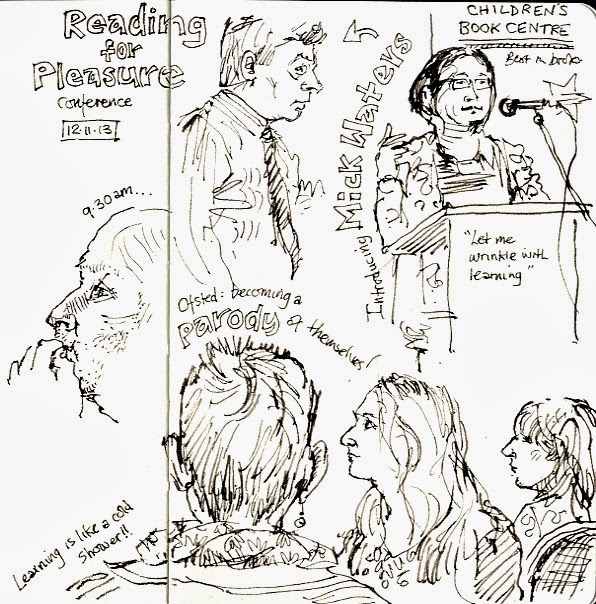
Well, I visited a couple of local schools while I was there and one of them, Reepham Primary, has invited me back, which is a lovely vote of confidence (thank you Reepham!).
It's a long way to go for one day though. I was originally spending a couple of days in another Norwich school too, but they cancelled on me at the last minute. Not ideal, despite the cancellation fee. But I couldn't let Reepham down, so I'm still going.
Luckily another event has come up: Marilyn Brocklehurst at the much-admired Norfolk Children's Book Centre was supplying books for signing at Reepham School but, as it happens, she also coordinates the Norfolk branch of the Federation of Children's Book Groups. The Federation do all sorts of amazing things to promote reading, not least run the highly acclaimed Red House Book Award.
Marilyn arranged for me to do an author event for the Norfolk group on the evening before my day at Reepham Primary, which has definitely helped to get more value from all that travel time.
I was originally going to take the train but, with the changes to the plan, John volunteered to be my chauffeur instead (an ever-expanding job-description!). We got home last night and I'm declaring today a day of rest, so we'll be putting our feet up, probably with a book and a coffee, quite possibly in a nice local coffee shop. There might even be cake involved...
Despite my occasional moans about the early trains I have to catch, I do enjoy the March school visits season. I love interacting with the children. The one big drawback to being an illustrator is that it is easy to spend far too long on your own in the house.
Before the days of school visits, when I worked as an editorial illustrator and in the early days of doing the children's books, I used to get a bit stir-crazy. Being an illustrator might sound glamorous, but mostly it's just day after day in four walls, with only a computer and a drawing desk for company. In fact, I first met John because I decided I needed to interact with the world, before I lost the power of speech!
I'd not long moved to Sheffield, so didn't know many people and thought teaching at the local art college might be fun and help me make new friends. It was actually pretty scary to start with, but I muddled through and ended up lecturing for about 7 years, going from 1 day to 3 days a week.
I taught all sorts - Printed Textiles (that's what my degree is in), Life Drawing, Print-making (a lot of learning as I went along), Photoshop (even more learning as I went along!) and, of course, Illustration. John and I shared an office and discovered we were living on the same side of Sheffield. I had to get 2 buses to the college, so John started giving me a lift home after work and the rest, as they say, is history.
I think this is one of the first paintings I have of John, from those very early days in the 1990's. We'd not been married long:
We've been married for over 20 years now, so some of it is a bit hazy, but I do clearly remember fancying him in his black leather driving gloves, during those lifts home from the college!
I didn't used to keep a sketchbook as addictively in those days, so this is a much later sketch: the slightly older model, with a few more dints (don't tell him I said that, will you?).

By: AlanaP,
on 12/22/2012
Blog:
OUPblog
(
Login to Add to MyJacketFlap)
JacketFlap tags:
new testatment,
Marc Z. Brettler,
Peter Enns,
luke wrote,
luke’s,
traditions—jewish,
Bible and the Believer,
brettler,
Daniel J. Harrington,
enns,
harrington,
historical biblical context,
How to Read the Bible Critically and Religiously,
Mark,
matthew,
Christmas,
Religion,
bible,
John,
jesus,
luke,
Humanities,
bethlehem,
*Featured,
Add a tag
By Daniel J. Harrington, S.J.
The New Testament contains two Christmas stories, not one. They appear in Matthew 1–2 and Luke 1–2. They have some points in common. But there are many differences in their characters, plot, messages, and tone.
In the familiar version of the Christmas story, Mary and Joseph travel from Nazareth to Bethlehem. Because there was no room in the inn, the baby Jesus is born in a stable and placed in a manger. His humble birth is celebrated by choirs of angels and shepherds, and he is given precious gifts by the mysterious Magi. This version freely blends material from the two biblical accounts. It has become enshrined in Christmas carols and stable scenes as well as the liturgical cycle of readings during the Christmas season.
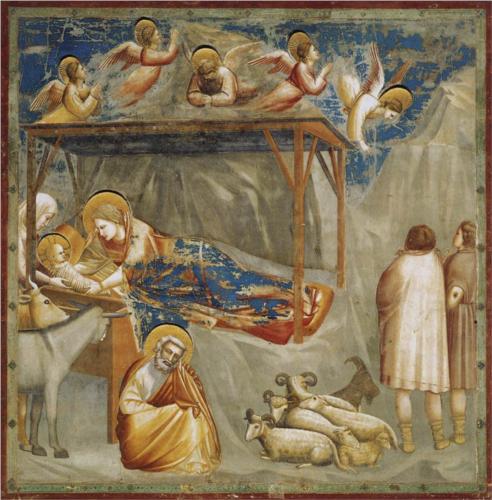
Giotto’s “Nativity, Birth of Jesus” from Scrovegni (Arena) Chapel, Padua, Italy c. 1304-1306.
My purpose here is not to criticize blending the two Christmas stories or to debate the historicity of the events they describe. What I do want to show is that by harmonizing the two stories we may be missing points that were especially important for Matthew and Luke, respectively. I want also to suggest that appreciating each biblical account separately might open up new perspectives on the infancy narratives for people today.
In The Bible and the Believer: How to Read the Bible Critically and Religiously, Marc Z. Brettler, Peter Enns, and I explore how each of our religious traditions—Jewish, Evangelical, and Catholic—tries to bring together the modern historical-critical reading of the Bible and contemporary religious faith and practice. There are, of course, many differences among us. But there are some principles we hold in common: the value of reading biblical texts in their original historical settings, the need for careful analysis of the literary dimensions of each text, and respect for what seems to have been the intentions of the original author. Applying these principles to the two Christmas stories in the New Testament will reveal more clearly their historical significance, distinctive literary character, and theological riches.
Matthew wrote his Gospel in the late first century CE, perhaps in Antioch of Syria. He was a Jewish Christian writing primarily for other Jewish Christians. He wanted to show that the legacy of biblical Israel was best fulfilled in the community formed around the memory of Jesus of Nazareth. Now that the Jerusalem temple had been destroyed and Roman control over Jews was even tighter, all Jews had to face the question: how is the heritage of Israel as God’s people to be carried on? Matthew’s answer lay in stressing the Jewishness of Jesus.
This setting helps to explain why Matthew told his Christmas story as he did. He begins with a genealogy that relates Jesus to Abraham and David, while including several women of dubious reputation who nonetheless highlight the new thing God was doing in Jesus. Next, he explains how the virginal conception of Jesus through the Holy Spirit fulfilled Isaiah’s prophecy (7:14), and how Jesus the Son of God became the legal Son of David through Joseph. Besides Jesus, Joseph is the main character in Mathew’s Christmas story. Guided by dreams like his biblical namesake, he is the divinely designated protector of Mary and her child Jesus.
The Magi story in Matthew 2 is part of a larger sequence that involves danger for the newborn child and his parents. When King Herod hears about the child “King of the Jews” as a potential rival for his power, he seeks to have Jesus killed. As a result the family flees to Egypt, while Herod orders the execution of all boys under two years old in the area of Bethlehem. Only after Herod’s death does the family return to the Land of Israel, though to Nazareth rather than Bethlehem. At each point in their itinerary, the family is guided by dreams and texts from the Jewish Scriptures.
In his Christmas story Matthew wants us to learn who Jesus is (Son of Abraham, Son of David, Son of God) and how he got from Bethlehem to Nazareth. Thus he establishes the Jewish identity of Jesus, while foreshadowing the mystery of the cross and the inclusion of non-Jews in the church. The tone is serious, somber, and foreboding.
Luke wrote his Gospel about the same time as Matthew did (but independently), in the late first century CE. He composed two volumes, one about Jesus’ life and death (Luke’s Gospel), and the other about the spread of Christianity from Jerusalem to Rome (Acts of the Apostles). The dynamic of the two books is captured by words now in Luke 2:32 taken from Isaiah (42:6; 46:13; 49:6): “a light for revelation to the Gentiles [Acts], and for glory to your people Israel [the Gospel].”
While in his prologue (1:1-4), Luke shows himself to be a master of classical Greek, in his infancy narrative he shifts into “Bible Greek,” in the style of the narrative books of the Old Testament in their Greek translations. Also there are many characters besides Jesus: Zechariah and Elizabeth, John the Baptist, Mary, and Simeon and Anna, as well as various angels and shepherds. These figures represent the best in Jewish piety. Thus Luke creates an ideal picture of the Israel into which Jesus is born.
In the gross structure of his infancy narrative, Luke seems intent on comparing John the Baptist and Jesus. His point is that while John is great, Jesus is even greater. So the announcement of John’s birth as the forerunner of the Messiah is balanced by the announcement of Jesus’ birth as the Son of the Most High (1:5-25; 1:26-56). And so the account of John’s birth and naming is balanced by the birth and naming of Jesus as Savior, Messiah, and Lord (1:57-80; 2:1-40).
Luke portrays Jesus and his family as observant with regard to Jewish laws and customs. At the same time, there are subtle “digs” at the Roman emperor and his clams to divinity. The narratives are punctuated by triumphant songs of joy. They are well known by their traditional Latin titles: Magnificat (1:46-46), Benedictus (1:68-79), and Nunc dimittis (2:29-32). These are pastiches of words and phrases from Israel’s Scriptures, and they serve to praise the God of Israel for what he was doing in and through Jesus.
With his infancy narrative, Luke wants to root Jesus in the best of Israelite piety, while hinting at Jesus’ significance for all the peoples of the world. That is why Luke’s genealogy of Jesus (3:23-38) goes back beyond Abraham all the way to Adam. Luke’s infancy narrative has provided the framework for the traditional “Christian story.” Its tone is upbeat, celebratory, and even romantic.
I have shown one way to read the Christmas stories of Matthew and Luke. It is a way that respects their historical contexts, literary skills, and intentions. It is not the only way. Indeed, during this Christmas season I will be celebrating (God willing) the traditional Christmas story in the two parishes in which I serve regularly as a Catholic priest. What I hope to have shown here is that there is more to the biblical Christmas stories than gets included in the traditional account.
Daniel J. Harrington, S.J., is professor of New Testament at Boston College School of Theology and Ministry, and co-author (with Marc Z. Brettler and Peter Enns) of The Bible and the Believer: How to Read the Bible Critically and Religiously.
Subscribe to the OUPblog via email or RSS.
Subscribe to only religion articles on the OUPblog via email or RSS.
The post Two Christmas stories: An analysis of New Testament narratives appeared first on OUPblog.

On Thursday morning, I discovered that the deadline for getting my Swap! artwork to my publisher, in time for them to prepare it for presentation at the Frankfurt Book Fair, was today. Yikes! I thought I had a little longer, and have been trying to get as much done as possible but, come Friday afternoon, I had to stop and post what I'd done to date.
It's not too bad: I've completed over 7 spreads, so enough to get a good flavour of how the finished book will look.
Luckily, with John to help me, I was relieved of the task of cutting all the mounts, labelling all the artwork and packaging everything up, (which seems to take ages), so I was able to continue with the artwork up to the last minute. By Thursday evening I'd finished the spread I started that morning, the final spread of the book, and wasn't sure how best to spend my final day.
It's always a problem when half my artwork is sent on ahead - I'm left with no colour reference for the rest of the illustrations, so have to down-tools until it's returned. So, I hatched a cunning plan... I decided to spend my last day colouring something I wouldn't send with the rest:
I worked on the vignettes for the back endpapers, doing all 6 together, since they are so similar. Sparky is in lots of positions, so I get all his markings recorded, plus the ballet costume colours, ready to do the ballet spread next.

By:
Lynne Chapman,
on 8/15/2012
Blog:
An Illustrator's Life For Me!
(
Login to Add to MyJacketFlap)
JacketFlap tags:
children,
libraries,
illustration,
drawing,
John,
workshop,
sketchbook,
watercolour pencils,
characterisation,
sketching on the train,
Add a tag
On Monday I was in libraries again, for the Summer Reading Challenge, doing events similar to the series of summer workshops I've been doing in Sheffield, but just a bit further up the road, in Derbyshire.
It was a very good thing I wasn't far afield, as I was a complete idiot that morning: I left my folder by the front door at home, the one with all the artwork I use to talk around. Not good. I realised my mistake as I was walking into Sheffield station, but there was no time to go back - my train was due in 15 minutes.
As usual, John came to the rescue. He drove my folder all the way to Brimington Library for me and hand-delivered it. He was so quick off the mark that he beat me there - what a hero!
This is me using some of the roughs that were in the folder, to explain the process of designing the big bear in Bears on the Stairs. I also showed them a piece of big, pastel artwork from Stinky! and read them Dragon's Dinner, deconstructing my illustrations as I went. Then it was time to get stuck into some drawing.
The children first learnt how to choose faces and body language to communicate emotions...
...then we all created lots of angry, sad, frightened, shocked, sarcastic and grumpy cats, dogs, bears, owls, warthogs, monkeys, hamsters etc.
After lunch my minder and I nipped down the road to Staveley Library, where I did it all again.
Both the workshops were really well attended: we had to squeeze everyone in, so a big thank you to the guys at the library service for their help with publicity.

By:
admin,
on 6/15/2011
Blog:
Litland.com Reviews!
(
Login to Add to MyJacketFlap)
JacketFlap tags:
review,
ya,
reading,
literature,
novel,
young adult,
young adults,
God,
teaching,
John,
teen,
rural,
morals,
priest,
John Desjarlais,
Add a tag

Bleeder: A miracle? Or bloody murder?
Desjarlais, John. (2008) Bleeder: A miracle? Or bloody murder? Sophia Institute Press. ISBN: 978-1-933184-56-2. Publisher age recommendation: Adult fiction. Litland recommends age 16 through adult. Not recommended for younger advanced readers. (Article first published as Book Review: Bleeder: A Mystery by John Desjarlais on Blogcritics.) http://blogcritics.org/books/article/book-review-bleeder-a-mystery-by/
Publisher Description: When classics professor Reed Stubblefield is disabled in a school shooting, he retreats to a rural Illinois cabin to recover and to write a book on Aristotle in peace. Oddly, in the chill of early March, the campgrounds and motels of tiny River Falls are filled with the ill and infirm — all seeking the healing touch of the town’s new parish priest, reputed to be a stigmatic. Skeptical about religion since his wife’s death from leukemia, Reed is nevertheless drawn into a friendship with the cleric, Rev. Ray Boudreau, an amiable Aquinas scholar with a fine library – who collapses and bleeds to death on Good Friday in front of horrified parishioners. A miracle? Or bloody murder? Once Reed becomes the prime ‘person of interest’ in the mysterious death, he seeks the truth with the help of an attractive local reporter and Aristotle’s logic before he is arrested or killed — because not everyone in town wants this mystery solved…
SO WHAT DO WE THINK?
Finally, I get to review a book in my favorite genre: cozy mystery! Desjarlais mastered it well in Bleeder. Reed Stubblefield is a professor on sabbatical. While often used to finish research or publish books, a sabbatical is truly meant to be a time of learning, development, self-improvement. Reed endures life “lessons” that he didn’t anticipate in this quiet rural town.
Written for adults, older teens will also appreciate the rich context within which Desjairlas situates his mystery as well as his multi-faceted characters. The protagonist, a religious skeptic, ends up knee-deep in a possible miracle—or hoax? Criticism and misunderstanding of Catholicism are treated realistically and given intellectual critique. In contrast to authors like Regina Doman who integrate classic literature with a poetic effect, Bleeder is equally intellectual but for the philosopher rather than the poet. However, rather than a heady treatment, we are entertained with continuous theme tying Aquinas to Aristotle in the self-talk and dialogue of characters. This gives it practical application to every day life (great for school assignment). A standard ethical process for decision making is provided that leads to the truth.
Each character in the story is dubious, and the reader sees how easy it is to appear to be a “good” person when not. Some are misguided religious fanatics who perpetuate their own beliefs from within a church community, showing how easily one can think they are following a path of Truth while actually straying into twisted religion. For others, their d
Who says spooky zombies are only for Halloween? Thanks to
vector artist John Schwegel for his sci-fi and fantasy cartoon t-shirts. Now zombie love can be celebrated all year long. You're definitely going to want to get yourself a few of these shirts. Any shirt that has a ghoul with a fork sticking out of his head is a must have for anybody's wardrobe. Hey - buy one of these bad boys and you
will have a monster in your closet.
Yes, there is a new addition to the studio - I have a Personal Assistant (!!!). For some time I have been feeling a little swamped by all the admin that seems to be attracted to me by some invisible, magnetic force...

You know how it is: once you get a bit behind, it starts to pile up, quite literally sometimes. But help is at hand, in the form of the (now even more) long-suffering John, who finished his contract at his regular place of work at the end of March. H
e has various irons in the fire but, about half the time from here on in, John will be my Right-Hand-Man, my secretary, project manager, researcher, administrator, (tea maker, brow wiper, foot massager..?).
Thanks to his help, I should manage to get all my artwork done in time for my deadline at the end of the week (despite my naughtiness yesterday!).
Luckily John's already got a pretty clear sense of how it all works here, so that part is easy, but it remains to be seen if we can continue to work together in the same room all day without killing one another! I have a whip on order, just in case he proves to be a slacker. Now I just need to decide what sort of uniform I want him to wear...
Artist John Vogl lives and works in Denver, Colorado in a very small studio under the moniker,
the Bungaloo. While much of his work focuses on limited edition concert posters that he designs and screen prints by hand, John's design, illustration, and art direction services are also available.
1 Comments on Hangin' At The Bungaloo With Artist John Vogl, last added: 3/17/2011
by John
Dear Santa,
So, I think I’ve been good this year—or at least, no worse than last year! Hence, here are a number of things I want this holiday season from children’s book authors and illustrators:
PICTURE BOOKS: I’m only interested in professional illustrators who can also write, so Santa, if you’re not keeping your portfolio up to date, you may want to skip ahead. But if you’re sharing this letter with any author/illustrators out there, I want to meet the next great children’s book character(s). I’m finding situational or plot-driven picture books are a tough sell, but a great character that can eventually be branded like Olivia, Fancy Nancy, Skippyjon Jones—that’s what’s working best right now. Also, I want high concept books like IT’S A BOOK or THE QUIET BOOK, which seem to be hitting the mark as well.
MIDDLE-GRADE FICTION: Santa, I really, really, REALLY want the next great middle-grade series. There’s a HUGE hole in the market right now for a new adventure series that appeals to both boys and girls, because a lot of established series (PERCY JACKSON, 39 CLUES) have recently ended. I want middle-grade that takes itself seriously—so much of the middle-grade I see takes that jokey, gross-out, paperback tone that doesn’t really match the reading ability of its audience. I want middle-grade that isn’t trapped in the classroom—I see way too many school stories that just don’t have enough hardcover appeal. And finally, I want middle-grade authors that ask “what if” the way Margaret Peterson Haddix did in her brilliant SHADDOW CHILDREN series.
YOUNG ADULT FICTION: I also want YA writers to ask “what if,” though not necessarily in a fantasy or dystopian setting; for example, Libba Bray’s GOING BOVINE blew me away with its inventive riff on DON QUIXOTE. I want something as funny as GOING BOVINE, too—so much of what I see is
soooo dark. Lighten up, folks! That said, I want to see clever concepts like THIRTEEN REASONS WHY, even if they do tread serious ground. And finally, Santa, I want to see something
genuinely
new, and not just another mash-up of established genres.
Santa, is this all too much to ask? I hope not, because next week I’ll send you my adult wish list...
by John
As
Jim wrote in his last post, it’s list season in publishing. So here’s one list that I was a bit surprised to see this time of year: from The Daily Beast,
the top five books about losing your job.
Nothing like unemployment to get you in the holiday spirit! But I bring it up because I’ve seen a lot of submissions lately featuring main characters who’ve lost their jobs. Of course, they say write what you know, and I imagine there are as many unemployed writers out there as anyone else
—probably more, since writing is a great productive outlet during the long, hard slog of job searching. Trust me, having been there myself, my first instinct was to put pen to paper.
But I do wonder if jobless characters are the best way to cure the unemployment blues, or to reach readers. None of the submissions I’ve seen have worked, generally because the negativity of the main characters makes them very hard to like, even if readers can relate to their being out-of-work. Moreover, depriving characters of a workplace to interact with other characters can often lead to navel gazing and a lack of dialogue, i.e., things that keep readers at arm’s length. And most of the time, unemployment isn’t even central to the plot
—in just about every submission I’ve seen, the characters could just as easily be working as not.
I think you’ll find gainful employment helps your characters connect better with readers, even those who have lost their jobs in real life. And if unemployment truly is your main thesis
—well, it’s telling that none of the books on the Daily Beast list are first novels. Perhaps to write well about joblessness, a writer needs more job experience as a writer first?
by John
As Thanksgiving rolls around this week, I’m reminded of one of the more confounding paradoxes of my previous career as a children’s book editor: that despite the natural opportunity for kids’ books to tie into the holiday, I could never, ever get a Thanksgiving title to work.
After all, Thanksgiving seems like an easy sell. The story of the Pilgrims makes a perfect subject for picture books, as do the themes of thankfulness, family, and togetherness that Thanksgiving celebrates. You’d think, too, that parents would need a book for the holiday, not only to explain things to toddlers, but to keep them seated and quiet for five minutes! And from the Macy’s parade to Black Friday, Thanksgiving has always been about buying stuff
—so why not books?
Yet, despite multiple attempts to publish books on Thanksgiving and the annual effort to market books for the holiday, I never saw a Thanksgiving book that sold really well. Instead, the best performers seemed to skirt the holiday and focus more on the general season, like Tomie dePaola’s
Strega Nona’s Harvest or Richard Michelson’s and Mary Azarian’s
Tuttle’s Red Barn.
So, if anyone has any ideas why these books don’t work, or better yet, how to make a Thanksgiving book a success, I’d love to know. Because I’d like to think that for the most American of holidays, there must be a successful way to share it through a book. Any thoughts?
by John
Did anyone see
the major feature from New York magazine on James Frey and Full Fathom Five? If not, it’s definitely worth a read, though, like some of the writers from the article, you may feel the need for a shower afterward.
Basically, Frey has set himself up as a book packager, which is an accepted and legitimate practice in publishing. Typically, a packager pays an author or illustrator a flat fee for their work, rather than an advance against royalties, then takes the manuscript and/or art and puts it together as a finished product, which is then submitted to publishers. For example,
Gossip Girl was put together by Alloy Media, then sold to Little, Brown, and several celebrity picture books like Jerry Seinfeld’s
Halloween were package deals as well.
However, the terms that Frey lays out for authors are atrocious and exploitative—a pittance of a fee ($250!), vaguely defined profit sharing, no copyright, no public acknowledgment of authorship, and so on. And the model of success that Frey sells authors on, his young adult novel
I Am Number Four, turns out to be not much of a success at all for his co-author. (Full disclosure—as an editor, I passed on
I Am Number Four, partly because the secrecy over authorship gave me the willies.)
But I guess what bothers me most about Full Fathom Five is how cynically they target the young adult market for their products—sorry, I mean their books. One of the main reasons I got into children’s publishing in the first place is the strong sense of moral responsibility among children’s editors not to publish “bad” book for kids. And while I know that hucksters like Frey have been part of the book business since the beginning, it’s disturbing not only to watch him prey on the YA market because it’s “hot” right now—you know if Adult Horror was selling, he’d be writing ghost stories—but also to witness his attempts at cloaking his credibility issues for a more naïve audience.
So I suppose this post is both a cautionary message and a moral plea for YA writers: Watch out for the Full Fathom Fives, and remember who you’re writing for. Now, excuse me while I hit the showers…
by John
Today I want to give a shout-out to one of my favorite blogs, Gregg Easterbrook’s Tuesday Morning Quarterback. Ostensibly a recap of the previous week’s football games, Easterbrook typically goes off on tangents that even a non-football fan can appreciate, covering everything from astrophysics to economics to Battlestar Galactica. One recurring item is Christmas Creep: how every year retailers and advertisers seem to be promoting Christmas earlier and earlier in the calendar. For instance, in Yokohama, Japan, the municipal Christmas lights went up on October 31st (so much for Halloween)!
I’ve had Christmas Creep on the brain, because November 1st seems to be an unofficial date for the media to start publishing their year-end best-book lists. So far we’ve got the New York Times best illustrated, Publisher’s Weekly and Amazon, with many more to come. I suppose I see the logic in getting these lists out early so that retailers can plan their “best of 2010” holiday displays. But still, by printing “best-ofs” in early November, these media outlets essentially declare that books are done for the year and make November and December a virtual dead zone for new titles.
With so many books fighting all year long for attention, publishers could really use two more months to space out their promotional efforts, rather than having to spend the end of the year focused on “the best.” But what if Christmas keeps on creeping earlier and earlier? Will the window for new book promotion shrink even further, to the point where publishers can only effectively market a few books a year? Or will people start getting skeptical of “best-of-the-year” lists that cover only 10 months or less, especially if there are fewer books to consider? Better yet, could books actually lead the way in reversing the Creep? To me, that would be the best Christmas present of all!
by John
Back when I was an editor at Putnam Young Readers, I had the pleasure of helping National Book Award-winner Nathaniel Philbrick adapt his adult bestseller
In the Heart of the Sea for young readers. It’s often tricky to translate adult work for a younger audience, but
In the Heart of the Sea had a clear hook: One of the two main characters from In the Heart of the Sea was 13-year-old Cabin Boy Thomas Nickerson, to whom any young reader could relate.
However, after reading
Nat’s review of Geoffrey Wolff’s The Hard Way Around: The Passages of Joshua Slocum in this Sunday’s
New York Times Book Review, I realized there’s another key reason why his book translated so well for young readers: Nat’s a big fan of his material, and his personal feelings permeate the entire work. I love Nat’s idea that you can take a nonfiction topic and show what you think of the story, actively involving yourself rather than approaching it as a non-judgmental author/reporter. I also love his suggestions that a) you can work within the existing record, rather than having to dig up little new minutiae that don’t really add much to the basic plot, and b) that well-known stories are still worth telling, especially if you give them a personal slant.
This fan-boy narrative style is one that Russell Freedman and Elizabeth Partridge have used successfully in their nonfiction work for kids, and I wish I saw more of it out there. So to all you nonfiction writers, here’s a simple plea: Get off the sidelines and get into your books!
by John
If you’re like me, you’re probably getting tired of the whole ebook/print debate. But even so, I had to take note of
this assertion from Nicholas Negroponte, founder of One Laptop per Child, on CNN that not only will physical books disappear, but that they’ll be gone in five years.
Five years? Really? To be fair, while Negroponte appears to mean this statement generally, his evidence rests firmly on his work in Africa, where he sees ebooks following the ubiquity of cell phones in developing nations. And indeed, if a society with no access to or history with any book format is suddenly given the choice between a bunch of dusty old tomes or a laptop with thousands of titles, the winner seems obvious.
But again—five years? While I’m sort of impressed by the sheer brazenness of Negroponte’s prediction—this is the first time I’ve seen an actual expiration date for the printed book—it does seem a bit hard to swallow, for any number of well-discussed reasons. I guess the only true way to test Negroponte’s theory is to check back with him on October 2015 and see what formats we’re reading. But then again, maybe Negroponte’s talking head days will be over in, oh, 2 ½ years? Maybe CNN will be gone in 4? The internet in 3 ¼?
by John
There was
a fantastic op-ed piece by Michael Cunningham in this past Sunday’s
New York Times, a must-read for anyone who wants to write. While ostensibly a piece about translation, Cunningham brilliantly articulates how writing is not an act of solo invention, and how it’s crucial not only for writers to recognize that they’re writing for an audience, but to identify specifically who that audience is as well. It’s a secret that successful genre writers know instinctively, but I’ve never seen it so neatly laid out for the general reader.
And I was particularly struck by how Cunningham improved his art through learning to write for an audience of one, namely Helen the hostess at a restaurant bar where he used to work. On first glance, it seems to go against common sense—I always assumed that even if you’re writing for a specific audience, like mystery fans or teen readers, you want to create something with broad enough appeal for all members of that audience. But then again, as Cunningham suggests, targeting a specific reader like Helen might actually create a more intimate conversation between author and reader and, hence, result in a better piece of work.
Obviously, there’s no right or wrong answer here, but again, kudos to Cunningham for framing the issue in such an elegant and accessible piece. No wonder this guy won a Pulitzer!
by John
First off, thanks so much to Jane for
the lovely introduction, as well as for inviting me to join the DGLM family in the first place. It’s only been a couple of days, but already it feels like home. As you might guess, I’m very eager to dive into this new world of agenting, so let me give you a brief idea of where I’m coming from, how I got here, and what I’m looking for going forward.
Coming out of college, I had the dubious distinction of graduating with not just one, but two fairly useless majors for the professional world (classics and music). Not really knowing what to do with myself, I moved to Boston for a year and discovered two things: 1) How much I loved reading outside of the academic setting, and 2) there was this industry called book publishing where people seemed to read for a living!
Hence, I moved back to New York and somehow landed an Editorial Assistant gig at Simon & Schuster Books for Young Readers. At the time, I knew less than nothing about kids’ books, but I figured the hardest thing about getting a job in publishing was getting the job—and that maybe after 6 months or so in kids’ books I could “graduate” to the adult side.
Very fortunately for me, I discovered that children’s literature was where I belonged, and for the next twelve years I happily immersed myself in that world, moving from S&S to Putnam and eventually editing my own list of novels, picture books and nonfiction for young readers.
As to
why I found the young readers department so appealing: For one, there’s a general consensus in kids’ books that no one wants to publish a “bad” book for kids—even the most commercial licensed material usually has an educational element or something positive to recommend it. Along those lines, in the darkest teen novels or dystopian fantasies, there’s almost always a sense of hopefulness to children’s literature, a feeling that in the end things will work out—and I’ll admit it, I’m a sucker for a happy ending. I love, too, how children’s writers use the first person, giving you an intimate connection with a young character and letting you see the world through a young person’s eyes. And on the younger level, the artwork being created today for picture books is nothing less than spectacular—if you can ever make it to the Society of Illustrators annual exhibition of picture book art here in New York, you’ll see a collection that rivals the finest museums.
While I still relish editing and working with authors and illustrators, finding new talent has always been my favorite part of an editor’s job, and so I’m thrilled for this new opportunity to directly encounter fresh, distinct voices and to help authors transform their voices into books. And while my first love will always be kids’ lit, I’m looking forward to exploring the adult genres that have always interested me—perhaps not quite a “graduation” to adult, but more like a Junior Year Abroad?
For more information on what I’m looking for specifically, please
check out my bio and
essay on the DGLM website. And then, please query me about your projects—I know there are authors out there waiting to be heard, so let me help you broadcast your voice to the world. Looking forward to reading your work soon!
by Jane
Today I am delighted to welcome John Rudolph as the newest agent at Dystel and Goderich Literary Management. Previously, John was Executive Editor at G. P. Putnam’s Son’s in their children’s and young adult imprints. Before that he was Associate Editor for Young Readers at Simon & Schuster. He graduated from Amherst College.
John will begin agenting in the categories of children’s, middle grade and young adult—both fiction and non-fiction—since these are categories with which he is familiar. He is hoping, however, to branch out into men’s fiction, pop culture, music, sports and humor.
I am delighted to welcome John to our staff.
His profile is up on our website along with his contact information. Feel free to start sending him queries.
Please join me in saying “hello” to John Rudolph.
.jpeg?picon=3403)
By: Tamie Wolford (Gonzalez) ,
on 2/26/2010
Blog:
Tamie Writes!
(
Login to Add to MyJacketFlap)
JacketFlap tags:
Grisham,
Hodder & Stoughton,
U.S.,
John,
Social Networking,
penguin,
John Grisham,
young readers,
U.K.,
Add a tag
I was very excited to read that Dutton is set to publish a series for kids! I have always loved his work and to see a children’s series is triple exciting!
 Penguin Young Readers Group in the U.S. and Hodder & Stoughton in the U.K. announced today that they will be publishing bestselling author John Grisham’s first series of books for children. The middle-grade series will focus on 13-year-old Theodore Boone, a legal whiz kid. In the first book, Theodore Boone: Kid Lawyer, Theo gets caught up in a high-profile murder trial in his town. It’s scheduled to be released by Dutton Children’s Books on May 25, and on June 10 by Hodder in the U.K. The second book, as yet untitled, is scheduled for release in 2011.
Penguin Young Readers Group in the U.S. and Hodder & Stoughton in the U.K. announced today that they will be publishing bestselling author John Grisham’s first series of books for children. The middle-grade series will focus on 13-year-old Theodore Boone, a legal whiz kid. In the first book, Theodore Boone: Kid Lawyer, Theo gets caught up in a high-profile murder trial in his town. It’s scheduled to be released by Dutton Children’s Books on May 25, and on June 10 by Hodder in the U.K. The second book, as yet untitled, is scheduled for release in 2011.
Penguin bought the series yesterday in a two-book deal with Grisham’s longtime agent, David Gernert of the Gernert Company. Don Weisberg, president of Penguin Young Readers Group, and Julie Strauss-Gabel, associate publisher at Dutton, acquired North American hardcover and paperback rights to the series, and Strauss-Gabel will edit the two books. Oliver Johnson, publisher at Hodder & Stoughton, will edit Grisham in the U.K.
“Since children’s books is a completely different area of publishing than adult, and since John had never experienced any publishing in the children’s area, we went out and spoke to a very, very small number of people we felt were particularly good at children’s books,” said Gernert, adding that Random House, Grisham’s adult publisher, was in the mix. “We tried to figure out who had the vision for launching Theo that most matched John’s, and it ended up being Penguin and Don Weisberg.”
Both Johnson and Weisberg have previous connections to Grisham, though neither Penguin nor Hodder publish his adult books. Johnson was Grisham’s longtime editor at Random House U.K. before moving to Hodder, and Weisberg oversaw sales for Grisham’s books when he was head of the sales department at Random House U.S. “I’ve worked with John for many years,” Weisberg said in an interview. “What makes John Grisham so successful as an adult writer just lends itself to the middle-grade format and age group. The pace, the intelligence, the way he respects his audience, it’s just terrific.”
According to Weisberg, publicity plans for the series are “still being discussed. Our marketing plans and promotional plans will be very aggressive, obviously. Details to come. We’re in the planning stages.” Gernert said that his agency is just beginning to look into selling the series into foreign territories. Grisham has more than 250 million books in print worldwide, and his books have been published in 29 languages.
Share on Facebook

By: SarahN,
on 11/17/2009
Blog:
OUPblog
(
Login to Add to MyJacketFlap)
JacketFlap tags:
Politics,
new york,
Current Events,
American History,
John,
York,
Eric,
A-Featured,
Media,
New,
terrorism,
justice,
Michael,
Elvin,
Lim,
Eric Holder,
Holder,
vengeance,
Elvin Lim,
John Yoo,
Khalid Sheikh Mohammed,
Michael Goodwin,
Yoo,
Khalid,
Sheikh,
Mohammed,
Goodwin,
Add a tag
Elvin Lim is Assistant Professor of Government at Wesleyan University and author of The Anti-intellectual Presidency, which draws on interviews with more than 40 presidential speechwriters to investigate this relentless qualitative decline, over the course of 200 years, in our presidents’ ability to communicate with the public. He also blogs at www.elvinlim.com. In the article below, he examines our nation’s concepts of vengeance and justice in light of alleged 9/11 mastermind Khalid Sheikh Mohammed’s forthcoming trial in New York City. See Lim’s previous OUPblogs here.
There are four reasons which have been supplied to suggest that Khalid Sheikh Mohammed (KSM) does not deserve a civilian trial in New York:
1. This is what KSM wants – a show trial, and he should not get what he desires.
2. The trial will increase the risks of a terrorist attack in New York.
3. Classified information will be released in a civilian court trial, to the benefit of potential future terrorists.
4. The injury KSM has inflicted is a war crime, and not a domestic criminal matter.
1-3 are unverifiable predictions, sub-points to the main point, 4, which is the motive force behind the considerable agitation behind Attorney General, Eric Holder’s decision. Those who oppose a civilian trial for KSM want vengeance more than they want justice. This is exactly what Michael Goodwin has argued:
“Either try the detainees in military courts on secure bases or, best of all, give them death now. Mohammed and some others already acknowledged guilt and said they were ready to die.
I say we take yes for an answer.”
Well, there we have it. Goodwin wants vengeance primarily, and justice only incidentally. Now, vengeance and justice are not unrelated. Vengeance presumes the existence of guilt, so the pursuit of vengeance can lead to justice. Indeed, in an anarchic, godless world of all against all, vengeance is the closest thing there is to justice. To speak of justice would be a categorical mistake because without the apparatus of sovereignty and law, it is a standard that stands on stilts. We say “Justice under the Law” because without law, justice is a meaningless concept.
Goodwin and others like Mayor Rudy Giuliani who want to deny KSM a civilian trial believe, though they have not fully articulated their reasons, that the international milieu exists as a state of nature in which there is no universal law and no universally accepted sovereign law-giver, and therefore, the pursuit of justice is folly and the pursuit of vengeance necessary. If there is neither legality nor illegality, then there is only strength and weakness. Vengeance will have to do. This is why Rudy Giuliani insists on the frame that we are a nation at war, that we are dealing with terrorists or “enemy combatants” and not what John Yoo called “garden-variety criminals.”
To be sure, in a government of laws such as in a liberal democracy, justice takes on higher attributes that vengeance does not (and cannot). While justice is about law; vengeance is about necessity because it privileges immediate judgment over the process that would deliver such a judgment. While vengeance gives specific solace to those who were injured, justice assures all citizens that the system in which they conduct themselves works, – i.e., while vengeance is pointed, justice is blind, and while vengeance is preponderant, justice is proportionate.
Well and good. But as we consider whether or not KSM should have been granted a civilian trial, we need to determine the context in which we make this judgment: is terrorism a domestic criminal matter or an act of war? If the context is the former, then the Constitution takes precedence and it makes sense to speak of justice and that is what KSM deserves. If it is the latter, then because there is neither universal law nor a sovereign law-giver in the international milieu, KSM will have to suffer our vengeance because justice is not an alternative.
We have not settled on an answer to this question of whether or not terrorism is a criminal or a war crime because our historical definition of war has not caught up with its modern incarnation in which deterritorialized non-state actors perpetrate acts of violence. Our discussion over what KSM deserves is a footnote to this larger debate.


Image via Wikipedia
Nothing like John Wayne or like Eastwood , Randolph Sott was different he worn his hat different and even his gun. Was quick with the draw and tough with the talk. And even mention in a Statler brother song. And that most rare in terms of mentioning others in songs. Joe Dimaggio is another in a Simon and Garfunkel song.
Scott was one of those cowboys who made you want to ride a horse. Roger had Trigger the lone Ranger had Silver and Tonto had Scount. But he was also a dramatic actor but very under rated in terms of his era and generation.


Image via Wikipedia
Nothing like John Wayne or like Eastwood , Randolph Sott was different he worn his hat different and even his gun. Was quick with the draw and tough with the talk. And even mention in a Statler brother song. And that most rare in terms of mentioning others in songs. Joe Dimaggio is another in a Simon and Garfunkel song.
Scott was one of those cowboys who made you want to ride a horse. Roger had Trigger the lone Ranger had Silver and Tonto had Scount. But he was also a dramatic actor but very under rated in terms of his era and generation.

By: Rebecca,
on 7/20/2009
Blog:
OUPblog
(
Login to Add to MyJacketFlap)
JacketFlap tags:
Reading Room,
Bryant,
John R. MacArthur,
MacArthur,
Sawyer,
Harper\ s,
Literature,
Current Events,
Free,
A-Featured,
A-Editor's Picks,
Prose,
Leisure,
OWC,
Bryant Park,
Harper's Magazine,
Reading,
Magazine,
read,
John,
Tom Sawyer,
Mark Twain,
Oxford University Press,
R,
Park,
Tom,
Mark,
lunch,
Room,
Twain,
Add a tag
What are you doing during lunch tomorrow? If it involves sitting at your desk eating a sandwich consider joining us in Bryant Park. Oxford University Press has teamed up with the Bryant Park Reading Room to host a FREE discussion of The Adventures of Tom Sawyer led by John R. MacArthur, publisher of Harper’s Magazine and author, most recently, of You Can’t be President: The Outrageous Barriers to Democracy in America. In the blog post after the break MacArthur introduces us to the relationship between Harper’s and Mark Twain.
So be sure to come to the Bryant Park Reading Room (northern edge of the park), Tuesday, July 21st from 12:30 p.m. to 1:45 p.m. The rain venue (don’t worry we are doing our best no-rain dances) is The General Society of Mechanics and Tradesmen Building, 20 West 44th Street. Sign up in advance and receive a FREE copy of the Oxford World’s Classic, The Adventures of Tom Sawyer (offer is limited while supply lasts).
The histories of Mark Twain, William Dean Howells and Harper’s Magazine are so intimately linked, so important to the fabric of the magazine, that I talk about Twain and Howells around the office as if they were still alive. The other day I told a staff meeting that as long as I was running Harper’s, it would remain a literary magazine that also publishes journalism — not the other way around — because of Howells’s and Twain’s ever-present legacy.
Howells met Twain in 1869, three years after Twain had published his first long narrative in Harper’s, “43 Days in an Open Boat.” As the future literary editor of Harper’s recalled, “At the time of our first meeting…Clemens (as I must call him instead of Mark Twain, which seemed always somehow to mask him from my personal sense) was wearing a sealskin coat, with the fur out, in the satisfaction of a caprice, or the love of strong effect which he was apt to indulge through life.” It’s no coincidence that for our special 150th anniversary issue in 2000, we constructed a cover photo of Twain in his dandy suit facing Tom Wolfe in his dandy suit.
Clemens and Howells became good friends and in 1875 the genius from Hannibal asked Howells to read the manuscript of The Adventures of Tom Sawyer. “I am glad to remember that I thoroughly liked The Adventures of Tom Sawyer,” Howells wrote, “and said so with every possible amplification. Very likely, I also made my suggestions for its improvement; I could not have been a real critic without that; and I have no doubt they were gratefully accepted and, I hope, never acted upon.” Howells was underrating his influence on Twain, who penned over 80 pieces for Harper’s. As a critic and a fine novelist in his own right, Howells was correct — Tom Sawyer is a great American novel. Indeed, not everyone agrees that it’s any less of an achievement than the more widely acclaimed (at least in serious literary circles) Huckleberry Finn. I’m looking forward to talking about the book next week and finding out the answer to a number of questions: for example, precisely how old is Tom Sawyer? I assume the Twain scholars in the audience will enlighten me on this and other matters.




By: Rebecca,
on 6/30/2009
Blog:
OUPblog
(
Login to Add to MyJacketFlap)
JacketFlap tags:
A-Featured,
1950s,
Media,
Elvis,
Jackson,
1960s,
1980s,
John Lennon,
Michael Jackson,
Lennon,
Elvis Presley,
Joseph,
Farrah,
Michael,
Farrah Fawcett,
Joseph Conrad,
Presley,
Fawcett,
Conrad,
Music,
Current Events,
American History,
John,
Add a tag
Elvin Lim is Assistant Professor of Government at Wesleyan University and author of The Anti-intellectual Presidency, which draws on interviews with more than 40 presidential speechwriters to investigate this relentless qualitative decline, over the course of 200 years, in our presidents’ ability to communicate with the public. He also blogs at www.elvinlim.com. In the article below he reflects on nostalgia for the 80’s. See his previous OUPblogs here.
than 40 presidential speechwriters to investigate this relentless qualitative decline, over the course of 200 years, in our presidents’ ability to communicate with the public. He also blogs at www.elvinlim.com. In the article below he reflects on nostalgia for the 80’s. See his previous OUPblogs here.
Journalists are not usually in the habit of looking back. They are charged to deliver “breaking news” to us. Novelty is the coinage of the newsroom, not history. Yet this week, the media’s preponderant coverage of the life and death of Michael Jackson has been stridently nostalgic. It reveals a culture needing and ready to sing an ode to the 1980s.
We cannot turn back time, but we can mark its passing. Up till last week, popular culture hadn’t had the chance to address the passing of an 80s superstar and with that, the 1980s. We were given occasion to mourn and contemplate the passing of the 1950s with Elvis Presley’s untimely death, and the passing of the 1960s with John Lennon’s death. So we have sung an ode to the post-war consensus, as we have sung an ode to the cultural revolution.
But enough of the 80s has remained with us - MTV, Nintendo, Reaganomics - not defunct but writhing for relevance, that we have not dared sing its eulogy. Michael Jackson’s and Farrah Fawcett’s death has served us a dramatic notice that it may be time.
After all, it is unlikely that we will see another Michael Jackson. In our era where songs are downloaded one at a time, no one is likely to sell a 100 million records (of “Thriller” or any other album) again. The 80s are over, but it has taken us three decades to find a moment to collectively mark and mourn its passage.
Tragic deaths are compelling not only for human interest reasons, but for the decisive statement about our mortality they make. For if even iconic characters who once defined their age can be so suddenly ejected from the remorseless flow of history, then there is surely no stopping the march of time.
It is no surprise that Michael Jackson is more beloved posthumously than he was all of this decade. Elvis Presley too, had become more and more of a has-been as the 60s progressed. Time is never forgiving - our only feeble antidote is nostalgia. So wrote Joseph Conrad, “Only a moment; a moment of strength, of romance, of glamor–of youth! … A flick of sunshine upon a strange shore, the time to remember, the time for a sigh, and–good-bye!–Night–Good-bye…!”
If the 1980s and whatever the decade repesented are indeed over, then businessmen, journalists, and especially politicians - take note! Nostalgia can only occur when the past has been rendered past.

View Next 14 Posts














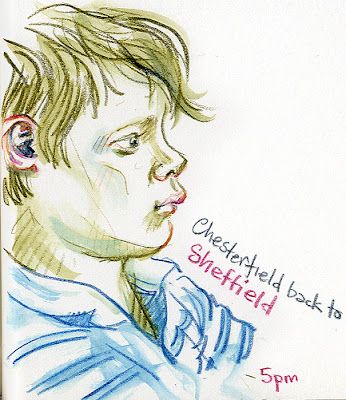

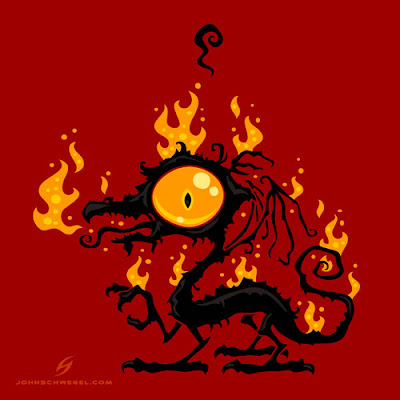



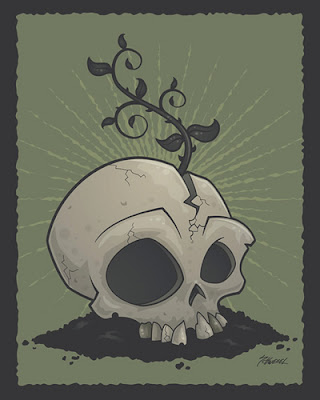













 Penguin Young Readers Group in the U.S. and Hodder & Stoughton in the U.K. announced today that they will be publishing bestselling author John Grisham’s first series of books for children. The middle-grade series will focus on 13-year-old Theodore Boone, a legal whiz kid. In the first book, Theodore Boone: Kid Lawyer, Theo gets caught up in a high-profile murder trial in his town. It’s scheduled to be released by Dutton Children’s Books on May 25, and on June 10 by Hodder in the U.K. The second book, as yet untitled, is scheduled for release in 2011.
Penguin Young Readers Group in the U.S. and Hodder & Stoughton in the U.K. announced today that they will be publishing bestselling author John Grisham’s first series of books for children. The middle-grade series will focus on 13-year-old Theodore Boone, a legal whiz kid. In the first book, Theodore Boone: Kid Lawyer, Theo gets caught up in a high-profile murder trial in his town. It’s scheduled to be released by Dutton Children’s Books on May 25, and on June 10 by Hodder in the U.K. The second book, as yet untitled, is scheduled for release in 2011.

Beautiful work.
Deadlines are always times of huge stress!
Thanks for sharing all your fabulous illustrations. I'm starting to play around with dry pastels and I wanted to know if you recommend any specific fixative?
I use Daler Rowney, which I think is marginally less problematic than Windsor and Newton. They are the ones commonly available here. Both change the colours a fair bit though.
I wish you success at the fair .
Amazing!! very beautiful illustrations!
these are so lovely! your blog is so fascinating! :)
love hearing how professionals pull things together!
looks like it'll be a great book! ballet with dogs- SO cute!
Here's to their well-earned success at Frankfurt!
Thanks B x